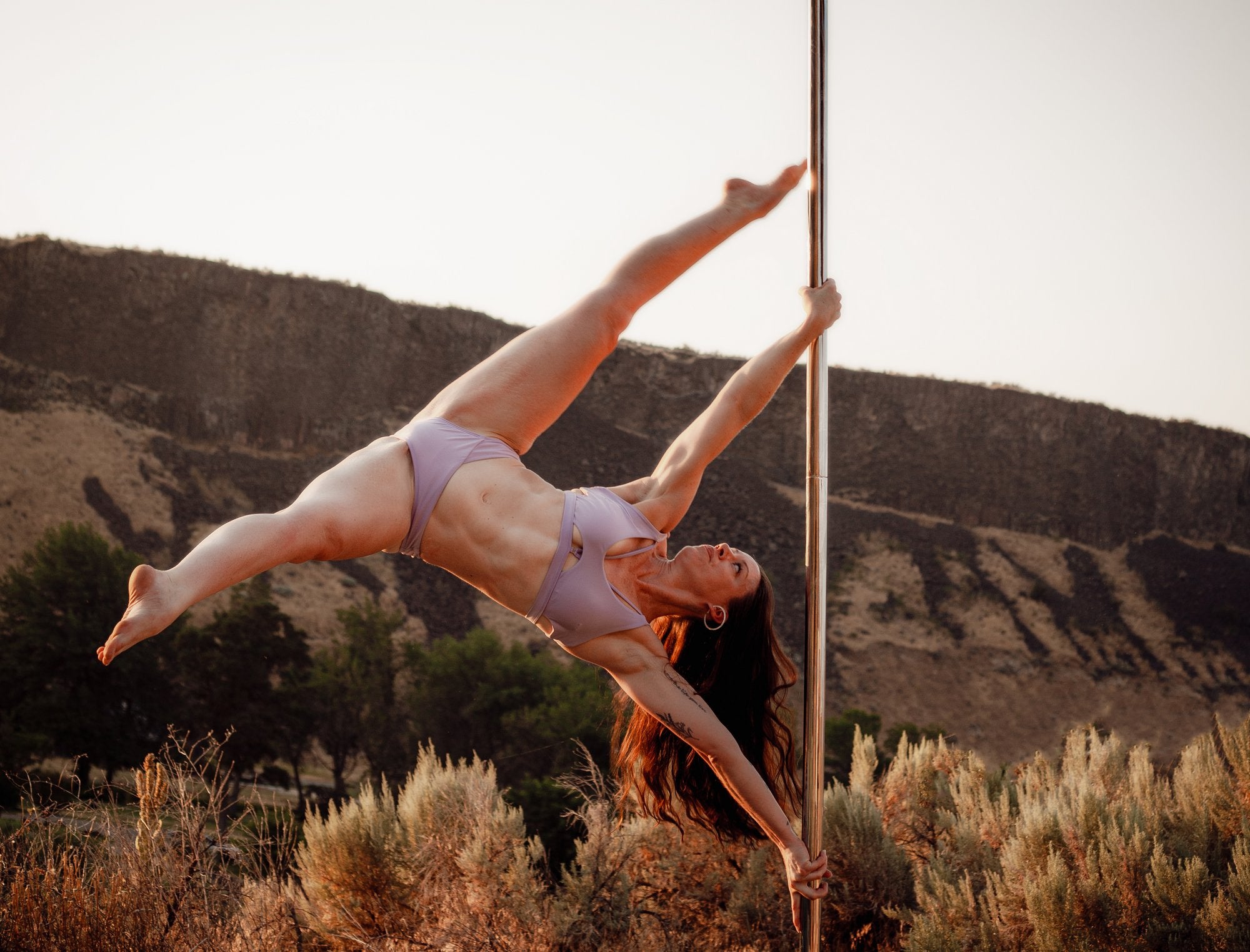News
7 Chinese Pole Dance Moves You’ll Want To Try

Chinese pole dancing is a different style than most are familiar with in the pole dancing community. Compared to modern pole dance, it’s less forgiving and requires a more precise approach. Not only in practice but also performances, it’s a group gig, so you might have seen some Chinese pole dancing if you have ever attended Cirque du Soleil. Dominic Lacasse, The Flag Man, has also brought recognition to the art of the Chinese pole. It’s one of the styles that modern pole developed from; however, there are some differences:
Customary For Males to Perform
Like mallakhamb, male performers or acrobats traditionally dominate Chinese pole. Because of its incredible ability to develop strength, stamina, and flexibility in one workout, men historically used it as training for wrestling or martial arts. In their respective societies, that tradition continues today. Chinese holds and poses require more upper-body strength because of this. You can see this in the classic strength move, the flag.
The Pole Height, Width, and Grip
Chinese poles are free-standing like stage poles. They are secured with circus rigging that holds the base directly to the floor and connects the top of the pole to the ground with long straps. If you get the chance to climb one, it has a little give to it, which is disconcerting the first time you sway with it.
In addition to extra looseness, the pole is tall compared to what you are used to; it ranges from 10 to 30 feet tall. The extra height allows for more acrobatic style moves like drops and flips you couldn’t pull off with the size of a standard pole. In addition to being staggeringly tall, the pole is wider than the standard pole, which can impact your grip. It gives those with larger hands an advantage.
The most significant difference between a standard and a Chinese pole is that the latter has a rubber coating. This provides an incredible amount of grip, allowing many more complex moves. However, it rules out any fun spins unless you want intense friction burns to accompany your jerky movements. To protect your skin, you will want full-coverage clothes, like a pole dancing bodysuit, which goes directly against all other pole dance clothing advice.
Despite all of these differences, here are some Chinese pole moves you can incorporate into your practice, even on your standard pole:
1. Frog
This is a rest position and the most important to learn so you can return to it any time you start to fatigue. It’s a traditional circus move that looks complex but will give you a nice break. You will have your knees bent outwards while placing your feet on the pole close to your thighs. You should look like a crouching frog with your hips open. Bring your dominant hand around the pole to lock in, straightening your dominant leg out if you prefer.
2. Chinese Pole Climb
This climb is another classic circus move you may have seen before, as it looks impressive on the taller poles. It’s different from a traditional pole climb, so you must have bare feet or wear grippy flat shoes, especially if you are on a regular dance pole. To start, you will place both feet flat on the pole, using the balls of your feet to push in. You will need to keep your arms bent and your hips towards the pole as you make your way to the top. If you start to fall back with straight arms, it’s challenging to continue the climb.
3. Lay Back
Nearly identical to the Fang movement in standard pole dancing, except you will grip with your thighs instead of your feet.
4. Gazelle Change
This move is more strenuous on a regular pole due to the lack of grip, so move slowly through the sequence until you get more comfortable. You can also use your hands on the pole while learning the move.
It is similar to the Gemini inversion, but you will keep your free leg straight and drop it over your back instead of the classic Gemini. Make sure you start higher on the pole, as you will descend slightly with each segment. Swing that free leg towards you while squeezing your thighs and swinging your torso around the pole. You will grip the pole with your armpit and change your leg into Reverse Gemini. Then you can repeat the move in the other direction and again for an incredible pole descent.
5. Hip Lock and Drop
It’s a variation on the Sit move. You will start with the pole centered at the top of the pole. Twist your legs as if you were doing the Barbed Wire, then you lean forward and round the pole to lock. You will slowly or quickly slide down the pole for the drop portion by relaxing your body to allow some slippage. It takes courage, but it’s invigorating if you can ignore the burn.
6. Hip Lock Walk Down
Again, you start in the Hip Lock position while straightening your left leg to walk your hands down the pole. You will squeeze your legs until you can hook your left foot on the back of the pole. You can hold this position without hands before preparing to do the next move, the Handstand.
7. Handstand
Like a Double Grip Straight Edge, you will start next to the pole, find your hand position, and kick up into the move.
Even if you are pole fit and experienced, you will feel the ache and burn after trying out these moves. It’s fun to try new methods and continue to expand your dance repertoire. If you find these interesting, seek out a Chinese pole class or private instructor to build up your craft. Just remember to wear your maximum coverage, non-sticky polewear if you do.


